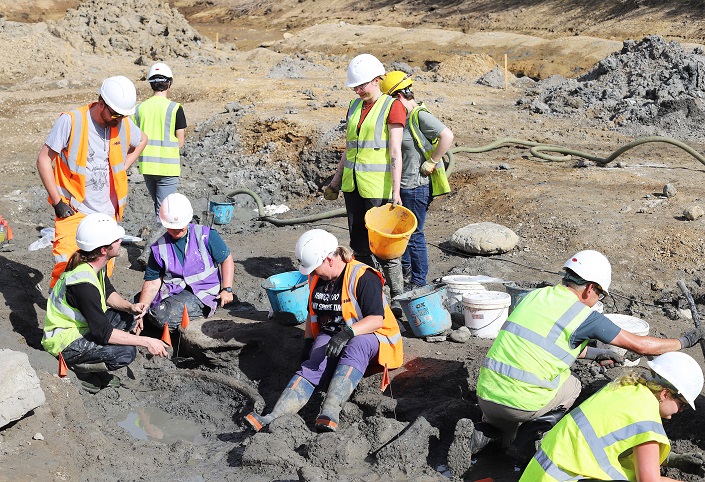
In 2019 and 2021 a 200,000-year-old mammoth graveyard was found at the quarry in south-east England, and the next phase of activity called Mammoth 2.0 has seen further exploration of the site.
The new palaeolithic finds at the site include the remains of steppe mammoth tusks, a pygmy mammoth tooth, several bison vertebrae, a rib and jawbone, wild horse ribs and a partially complete tooth from a cave or brown bear.
James Hogg, director of Neo Jurassica, said: “It was a true pleasure to meet Mike Hill and the team at Hills. If it wasn’t for their support and shared vision of the scientific importance of this site, this multidisciplinary systematic excavation would not have been possible.”
最近的活动进行了山的partner Neo Jurassica who are leading experts in this field. They are also working in conjunction with Archaeological Research Services, leading universities, museums and experts to continue the discovery work.
The discovered material is being conserved at the Yorkshire Natural History Museum in Sheffield, which will be accessible to researchers across the UK. Hills says the scope for this second phase of the investigation is vast. By amassing a large collection of mammoth bones, much can be learned about the size and social structure of their herds and how this compares to modern elephants.
Hills states that quarrying is fundamental in recreating biodiverse habitats, wet woodlands and enhancing nature. It adds that, whilst this is not always seen, it highlights the scientific importance of this site and how cooperation can benefit both the quarrying and scientific industries.
Peter Andrew, group director at Hills Quarry Products, said: “It’s a fantastic site and it just keeps on giving. We are looking forward to next year when we will welcome more teams of experts to carry out the next part of the excavation.”
As the area is not accessible and is normally underwater, the excavation involved dewatering the area using water pumps. Upon completion of the current investigation, the area was restored as a temporary lake.















